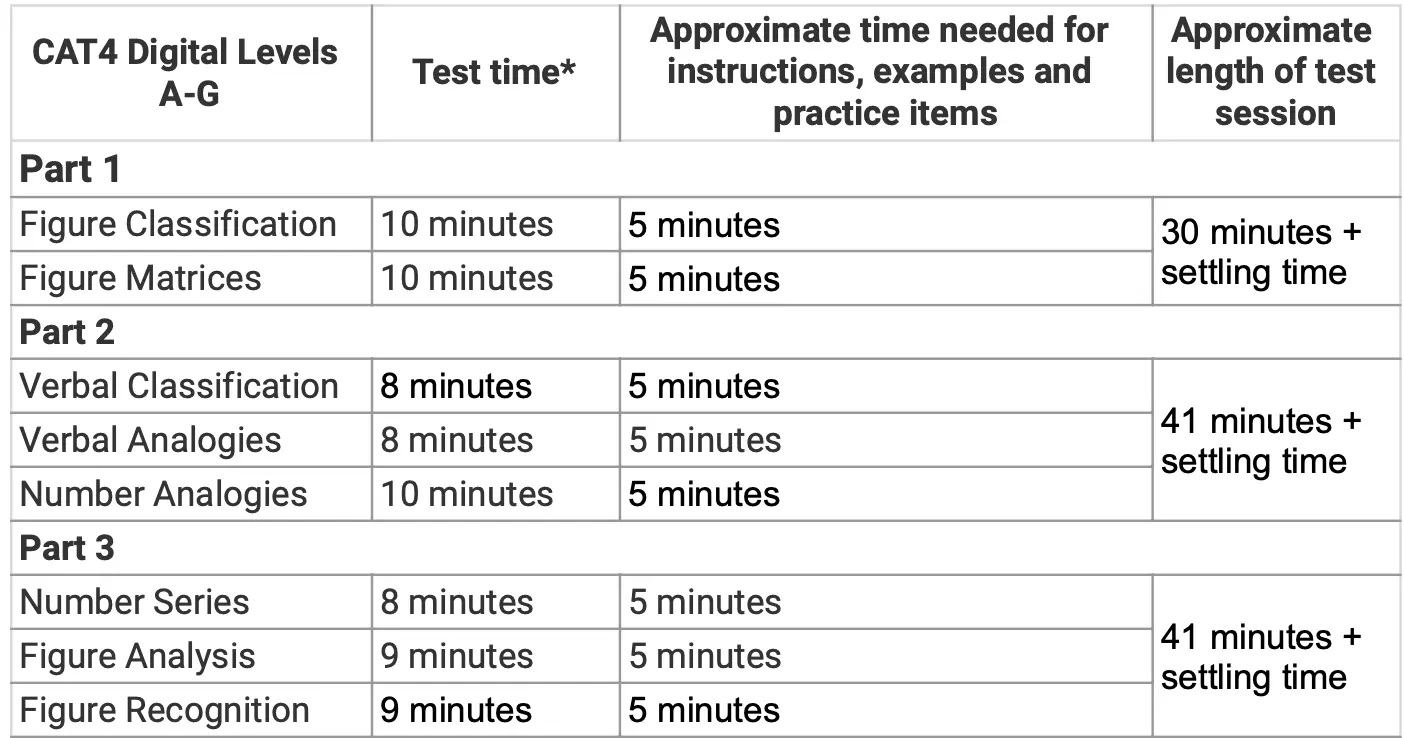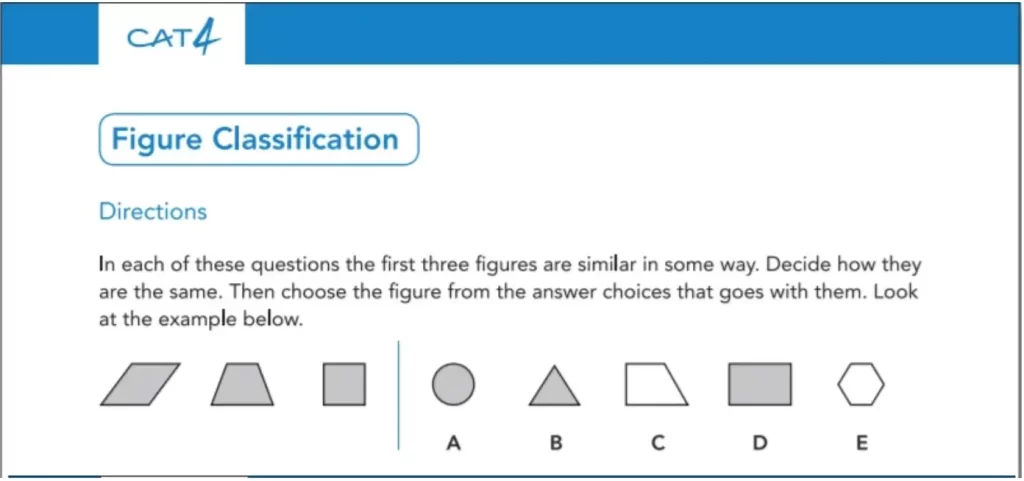Cognitive abilities are the bedrock of learning, offering a window into how students process information, reason, and solve problems.
At Spark by Transylvania College, we understand the transformative impact of understanding a student’s cognitive strengths and weaknesses.
That’s why, before each student begins their educational journey with us, we advocate for the Cognitive Abilities Test (CAT4). A comprehensive assessment designed to measure and explore each child’s cognitive landscape.
For Ages: 6 – 17+
Format: Digital (PC and tablet) or Paper
Duration: 45 minutes x 3
What is CAT4?
The Cognitive Abilities Test (CAT4) is a suite of assessments tailored for students aged 6 to 17. It aims to evaluate their verbal, nonverbal, quantitative, and spatial reasoning abilities.
It was created by GL Assessment, one of the UK’s leading exam providers, and it’s been standardised on around 25,000 children in the UK and Ireland.
This test enables parents and educators to see how students’ cognitive skills stack up against their peers nationwide, covering areas such as:
- Verbal Reasoning: Understanding and reasoning using concepts framed in words
- Non-Verbal Reasoning: Solving problems using pictures, diagrams, and shapes instead of words
- Quantitative Reasoning: The ability to use numerical skills to solve problems
- Spatial Reasoning: The capacity to think about objects in three dimensions and to draw conclusions about those objects from limited information
Educational institutions use the CAT4 assessments for different objectives than evaluations such as SATs and GCSEs.
The key distinction is that the CAT4 assesses a student’s inherent cognitive capabilities rather than the knowledge acquired from the curriculum.
What are the CAT4 levels?
The CAT4 offers ten distinct levels tailored to specific age groups, ensuring content relevance for each developmental stage. The most commonly used levels are A–G:
- Level A: ages 8–9
- Level B: ages 9–10
- Level C: ages 10–11
- Level D: ages 11–12
- Level E: ages 12–13
- Level F: ages 13–15
- Level G: ages 15+
When should students take the CAT4?
For Educators:
Use the CAT4 to assess the cognitive abilities of the students in your class if you want to offer a personalised learning experience to each student.
The test has the most effect if performed at the beginning of an educational cycle, so the teachers and parents can take steps towards tailoring the student’s educational experience based on their academic strengths & cognitive abilities.
For Parents:
Consider assessing your child with the CAT4 before significant educational milestones, such as entering a new school level or considering specialised educational tracks. This helps you plan the most supportive educational journey for your child.
It’s important to know that children can’t fail the CAT4, and the test is all about understanding their learning potential.
How the CAT4 works:
The test can be taken on paper or digitally.
Because at Spark by Transylvania College, we work with the Digital test version, we will go more in-depth regarding this version and what students can expect for the A-G Levels we presented above:

Source: GL Assessments.
Other things to keep in mind:
A countdown timer is displayed on the screen, indicating the duration allotted for each CAT4 test section.
These time limits are fixed and cannot be changed, ensuring each test section is completed within a set timeframe.
Should a student not finish a section when the time expires, the system automatically progresses to the next section or concludes the test.
Practice Tests
Students are not advised to prepare in advance for the CAT4 test or put effort into “passing” the test as we mentioned, it’s not to measure one’s knowledge but to assess their learning potential.
However, if high school students are curious to see what a practice test looks like, they can find one on the following link.

CAT4 – The fourth edition of the cognitive abilities test published by GL Education
Getting your CAT4 Results
After finishing the digital test, students will get their results immediately, and teachers and parents will have access to the results in order to interpret them and use them for planning an educational path for the student.
The students will get a Raw score which will be calculated based on how many questions they answered correctly.
Raw scores are measured against the performance of students in the same age range. Using the Raw Scores, three Normative Scores can be calculated to interpret students’ performance:
- Standard Age Scores (SAS)
- National Percentile Rank (NPR)
- Stanines (ST)
To interpret the results of the CAT4, we recommend that families and students reach out to an academic expert. Our expert tutors and Learning Journey Advisors at Spark by Transylvania College are great resources for families and students looking to understand their scoring on the CAT4.
The table below shows a set of example scores for an individual student:

Source: GL Education
Benefits of CAT4 for Students and Parents
The CAT4 offers a handful of benefits, from identifying cognitive strengths and weaknesses to helping tailor educational experiences that align with each child’s unique cognitive profile.
- Personalised Learning: Insights from CAT4 enable educators to tailor instruction and support, enhancing learning efficiency
- Strategic Educational Planning: CAT4 results assist parents and educators in making informed decisions about educational pathways and interventions
- Confidence Building: Understanding their cognitive strengths helps students build confidence in their abilities, encouraging a positive attitude towards learning
- Future Success: A strong grasp of one’s cognitive abilities lays the groundwork for academic achievement across all subjects.
Integrating CAT4 into Learning Strategies
With the CAT4 insights, Spark by Transylvania College collaborates with parents to develop personalised learning strategies that resonate with each child’s cognitive abilities.
Because the learning environment at Spark is so flexible, we can adapt students’ educational journey to revolve around the subjects they want to learn, their interests and their cognitive abilities.
Are you ready to unlock your child’s potential and provide them with an education that truly reflects their abilities and aspirations?
🖊️TAKE THE TEST today, and let Spark by Transylvania College guide you through every step of your child’s educational journey, from assessment to tailored learning strategies.
Curious about how we interpret and integrate the CAT4 results in your child’s learning journey at Spark by Transylvania College?
☎️Get in touch with our Admissions team, and we’ll tell you more about it!
FAQs about CAT4
-
What does the CAT4 assess?
CAT4 evaluates verbal, non-verbal, quantitative, and spatial reasoning abilities, offering a comprehensive picture of a student’s cognitive strengths and challenges.
-
What does the CAT4 tell you?
The true potential of students, flagging where hidden factors are affecting performance. It provides a range of easy-to-follow individual and group reports provide a more complete picture than curriculum tests can provide by themselves. They’re benchmarked against national performance and include Retrospective KS2, GCSE and A-level indicators.
-
Why should my child take the CAT4?
It’s statistically reliable. CAT4 was standardised on 25,000 students and is verified yearly based on analysis from a quarter of a million students.
-
Can CAT4 results guide the selection of educational programs?
Absolutely. The detailed insights provided by CAT4 assist in choosing the most effective educational programs and interventions for high school students.
-
What should parents do after receiving CAT4 results?
Engage with educators to understand the results and explore the best next steps. Spark by Transylvania College is here to support you with resources and programs tailored to your child’s cognitive profile.
-
Is the CAT4 an IQ test for students?
The CAT4 is an ability test, not an IQ test. While an IQ test is primarily a measure of a person’s ‘intelligence’, an aptitude test assesses a person’s ability to use that information in various contexts, frequently creatively or imaginatively. Aptitude evaluations are an innovative way of testing intellect that does not closely adhere to established conceptions of IQ.




